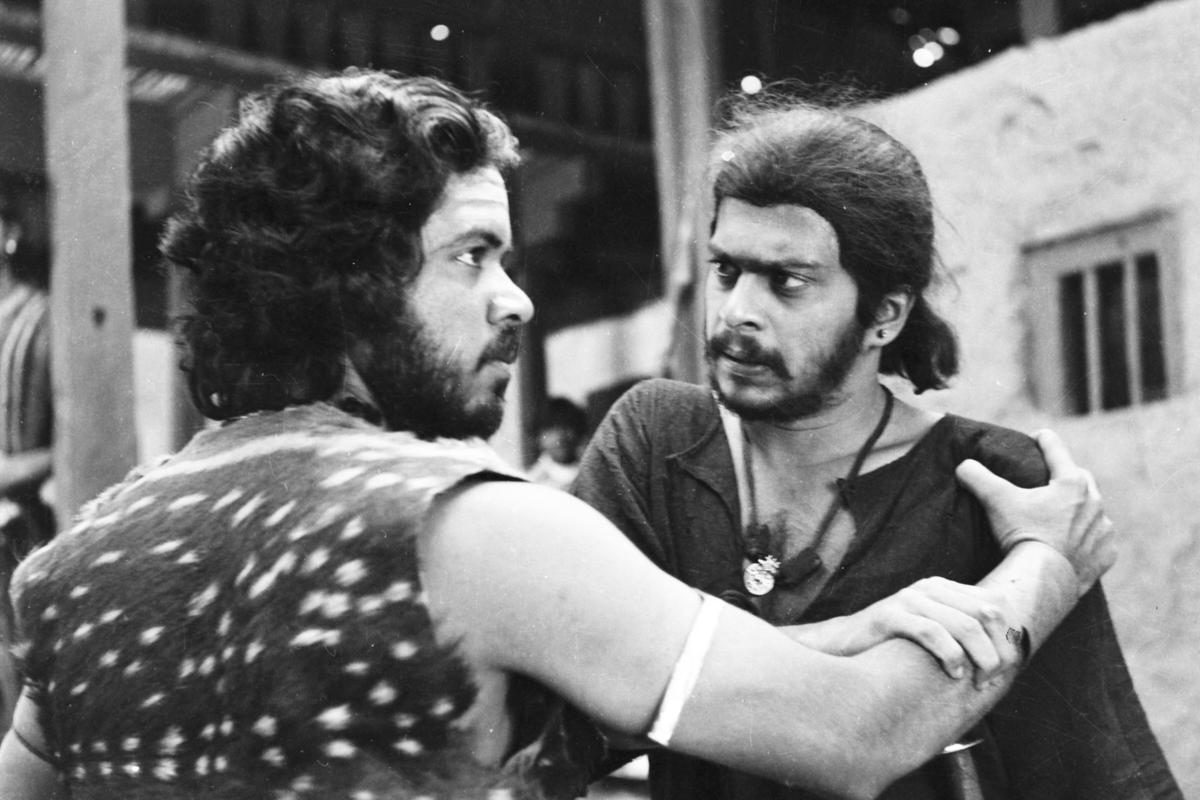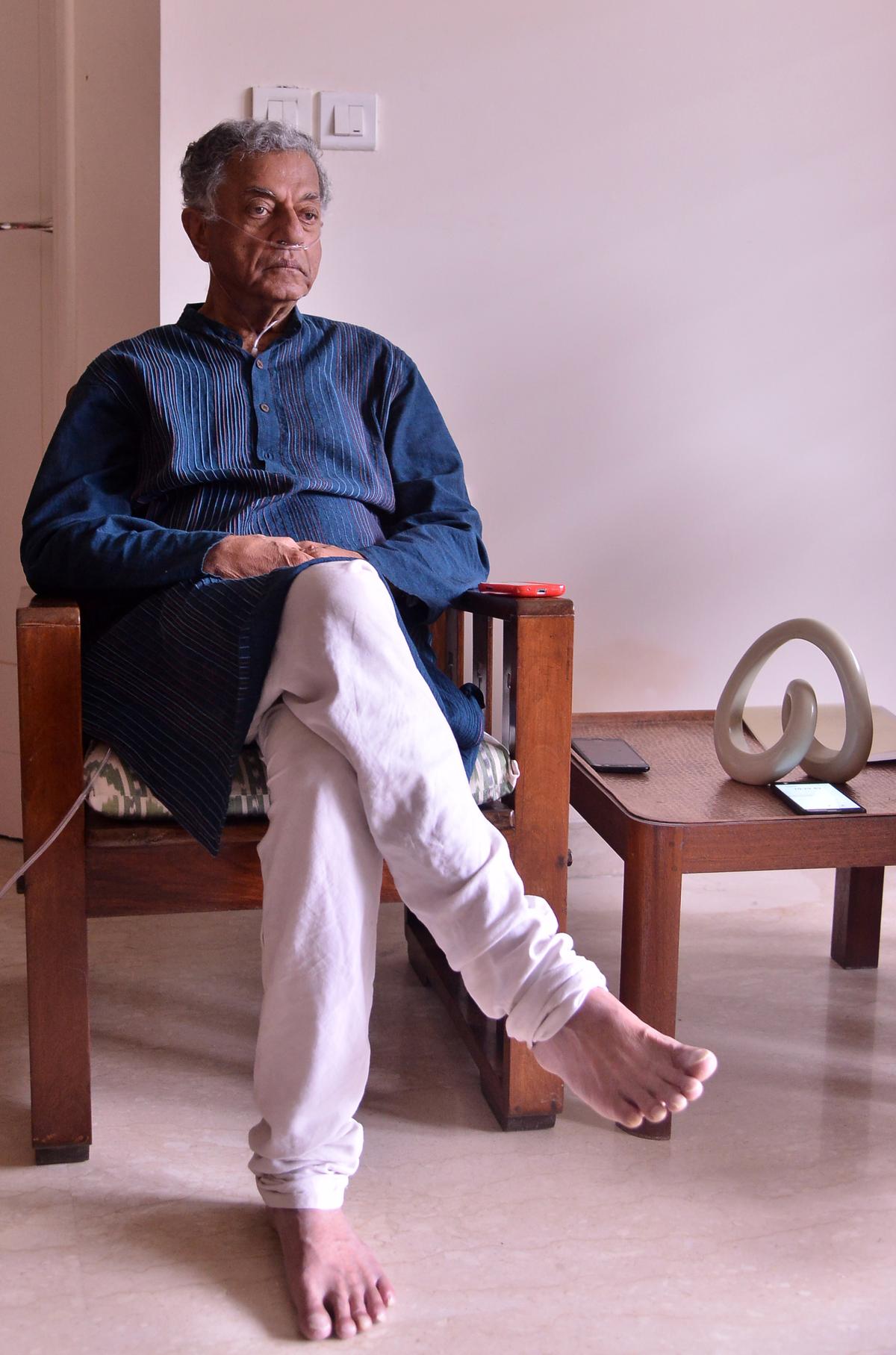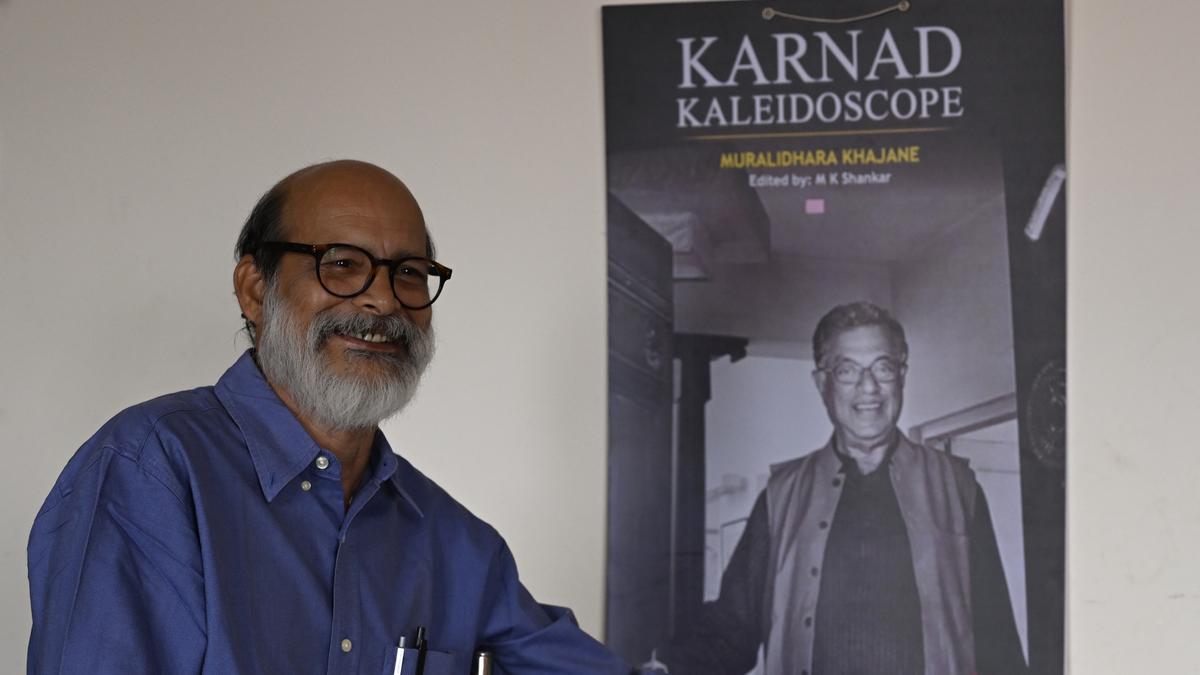“There are plenty of books that celebrate Girish Karnad’s contributions as a playwright and theatre director, but his celluloid journey has been vastly ignored. There is no documentation of it,” says Muralidhara Khajane, senior journalist and the author of the book, Karnad Kaleidoscope (published by Karnataka Chalanachitra Academy and edited by another senior journalist M.K. Shankar. The book was first released at BIFFES-2025 in March by Sadhu Kokila, chairman of Karnataka Chalanachitra Academy and at Suchitra Film Society in April. This is Muralidhara’s second book, his first is Random Reflections — A Kaleidoscopic Musings on Kannada Cinema, also published by Karnataka Chalanachitra Academy and co-authored with Subrahmanyan Vishwanath.
Girish Karnad played a pivotal role in the making of the film Samskara
| Photo Credit:
Special Arrangement
Sharing the whys and hows behind the book, Muralidhara says “I never planned to write a book on Girish or any other personality. In fact, I never dreamt of writing a book, simply because it is tiring to chase publishers.” Karnad Kaleidoscope, he adds, “happened after a long-drawn process. It includes many of my interactions with Girish during my journalistic years.”
Muralidhara goes back in time and recalls his association with the renowned actor and playwright. “I was introduced to Girish in 1984 at the office of the Bengaluru-basedVaara Patrike (a Kannada weekly) by its Editor B.V. Vaikunataraja, who was also a playwright and screenplay writer. I was enamoured by Girish’s personality and intellect. Soon after, Vaikuntaraju asked me to write a piece on Girish. I was nervous since I was a novice; but my Editor insisted.”
Muralidhara next went to meet Girish for the article. “Girish realised that I had not only watched his films, but had also read the books they were adapted from. So the interview went on smoothly.”
The math of creativity

Shankar Nag and Sunder Raj in a a still from the film Ondanondu Kaladalli , directed by Girish was a tribute to Akira Kurosawa
| Photo Credit:
Courtesy: ASWATHANARAYANA
“Girish was a commerce student who took to cinema. He learnt the craft on-the-go. When he was asked to make a documentary on Da Ra Bendre, he went to FTII (Film and Television Institute of India), Pune, and watched 65 documentaries, and read books on filmmaking. There is so much more about Girish that could not be compressed into this book. At that time, there were directors, composers, and screenplay writers with new perspectives, out to make their mark. Hence, their films felt different. Girish’s Samskara was one such — an iconic film.”
Karnad Kaleidoscope documents Girish’s journey from Samskara to Kanooru Heggadithi, which was his last. The book also includes the classic Utsav, directed by Girish and produced by Shashi Kapoor. There are interesting anecdotes shared by actors, writers, and cinematographers, including B.V. Karanth and L.V. Sharada, who worked with Girish. “The idea was to present his cinematic journey chronologically, giving the reader a peek into the behind-the-scenes. My years as a journalist at The Hindu and the stories I wrote about Girish and his works then helped me write this book,” says Khajane.

Despite his failing health, Girish was open to discussions and meetings
| Photo Credit:
The Hindu archive
After the first meeting, Girish and Muralidhara met often. “We would discuss literature, theatre and cinema. A few years later, I asked Girish if I could write a book on him. He refused straightaway saying, ‘I will write one myself’.”
Girish’s health started deteriorating, “despite this, he gave The Hindu an interview, which turned out to be his last. After the interview, Girish asked me to meet him again, alone, and that is when he asked me if I was still keen to write a book on him and that I could go ahead. ‘I do not think I can, but can share my notes with you for your book,’ he said. I was moved because he was generous to me,” says an emotional Murlidhara, who started writing the book during the pandemic. “The best part of the book are the photographs. Since I worked with The Hindu, I was able to access them from the newspaper’s archives.”
The midas touch

MK Shankar the editor of the book
| Photo Credit:
K BHAGYAPRAKASH
Says M.K. Shankar, “Karnad Kaleidscope is a result of an organic evolution over the years and not a result of an impulsive decision. Having worked as a film journalist, Murlidhara delves deeply into Girish’s creations as a filmmaker and brings together varied aspects of his distinct style. Hence, ‘Kaleidoscope’ in the title.”
According to Shankar, who teaches Hindustani music and writes and directs plays, “the book can be divided into three parts — Girish’s filmography, people who worked with him in films and his unfinished works.”
“When he passed away, Girish had scripts for over 25 films ready. He always thought in terms of script first,” says Murlidhara.
Published – June 16, 2025 06:07 pm IST
